At first glance, gas-shielded flux-cored welding process wire may seem to be the most troublesome filler metal. On one hand, you have to deal with the headaches of chipping slag. On the other, you have to contend with the portability and location limitations of using an external shielding gas.
Still, there are very good reasons for using gas-shielded flux-cored wire.
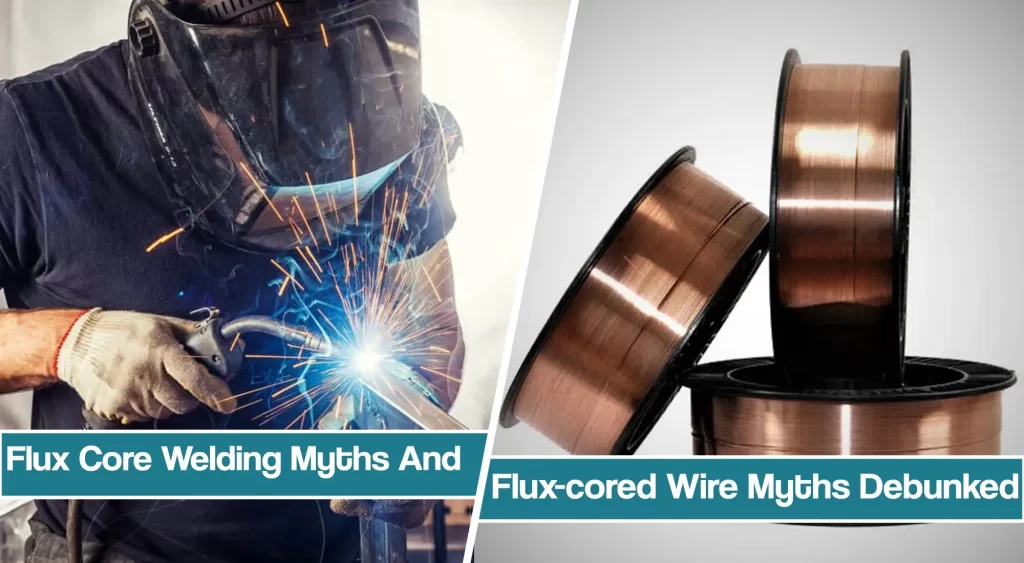
Unfortunately, the myths surrounding this type of wire often obscure the benefits and prevent companies from considering it as a viable option for their welding process.
Here are four common flux-cored wire myths — and the myth-busting truth. In addition, we will discuss common flux core welding myths.
Flux-cored Wire Myths
Myth #1: Flux-cored Wire Is Too Expensive
Many welders believe gas-shielded flux-cored wire is more expensive than solid wire. If filler metal were the only expense in a welding operation, this would be true. As it stands, however, the filler metal is only a minor cost in the overall welding operation.
Although gas-shielded flux-cored wire costs roughly 30 percent more than solid wire, the productivity gains possible with it can significantly outweigh the marginal increase in cost.

The slag system of flux-cored welding wires allows them to be welded at higher amperages than solid wire without the weld puddle becoming too fluid. This increases deposition rates and allows welding operators to use larger diameter wires than would be possible with solid wire.
For example, a 0.045 gas-shielded flux-cored wire in the AWS class E71T-1C H8 can deposit 8.9 pounds of wire per hour in the flat position. A comparable 0.045-in. diameter ER70S-3 solid wire can deposit up to 6.3 pounds of wire per hour at the same amperage. If a welding operator averages four hours of arc on time per day, that equals 10.6 pounds more wire deposited per day or a productivity improvement of over 41 percent with the flux-cored wire. Given that labor accounts for roughly 80 percent of a welding operation’s costs, the potential for increased profitability becomes very substantial.
Furthermore, a 0.052-in. gas-shielded flux-cored E71T-1C H8 wire often can be used in applications where 0.045 solid wire is being used. A 0.052-in wire can deposit 10.8 pounds of wire per hour, for a 71 percent increase in productivity or 18 pounds of wire more per day than with a 0.045 solid wire
The benefits of gas-shielded flux-cored wire over the solid wire are further amplified in vertical up applications. At current loads and wire diameters that cause a typical solid wire to become too fluid and run out of the joint, the slag system and arc cone of a gas-shielded flux-cored wire under the same conditions allow it to remain in the joint and achieve better tie-in to the side walls. This in turn reduces weld failures and rework, increases weld quality, and lowers overall production costs.
Myth #2: Flux Core Wire Unsuitable For Outdoor Use
It’s often observed that gas-shielded flux-cored wires are not suitable for outdoor applications.
It’s a fact that using a windscreen is necessary if there is a breeze over 5 mph, but that shouldn’t negate the fact that gas-shielded flux-cored wires can provide substantial improvements over both self-shielded flux-cored wire, Stick welding, and TIG welding in certain outdoor applications.
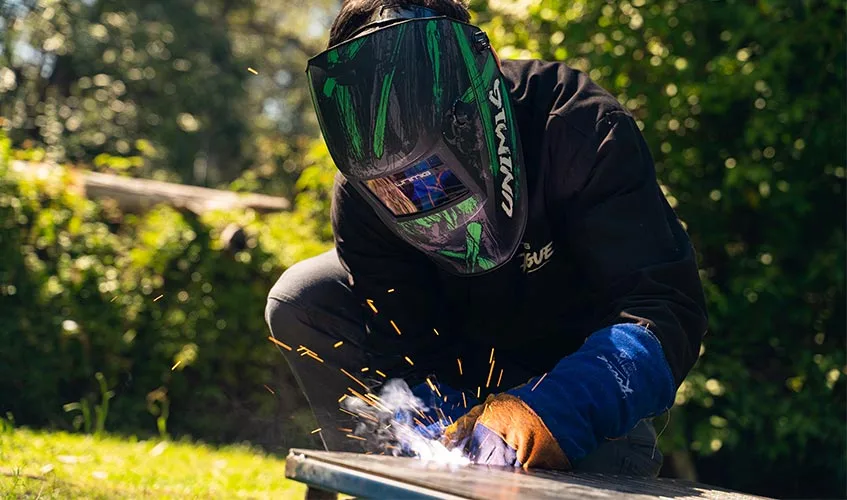
For pipelines, structural steel erection, heavy equipment repair, and a number of other outdoor applications, the increased deposition rates of gas-shielded flux-cored wire can result in higher net productivity than self-shielded wire, offsetting the extra time it takes to set up the windscreen.
For example, a 1/16-in. AWS E71T-8J H8 self-shielded flux-cored wire can deposit 8.5 pounds of wire in a flat position at 300 amps. A comparable 1/16-in. AWS E71T-1C H8 gas-shielded flux-cored wire, by contrast, can deposit 10.5 pounds of wire per hour using the same current for a nearly 25 percent increase in operator efficiency.
Although stick electrodes can achieve deposition rates comparable to the gas-shielded flux-cored wire, those benefits are negated by the need to stop and change electrodes on a frequent basis.
Myth #3: All Flux-cored Wires Are The Same
Many welders believe that all gas-shielded flux-cored products within the same AWS categories weld the same.
American Welding Society classifications dictate a number of factors, including tensile strength, weld position capabilities, shielding gas requirements, and hydrogen content. What they don’t determine, however, can be just as important to a specific application as what they do indicate.
As a result of the different fluxing agents used in the wire, different gas-shielded flux-cored wires within the same AWS categories can differ significantly in terms of spatter, fume levels, arc force, weldability, bead contours, slag, toughness, and more.
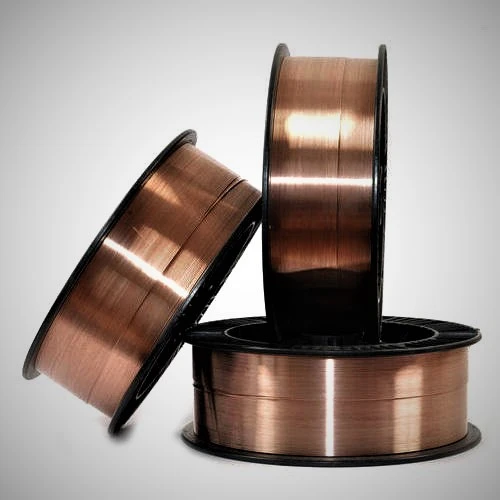
Gas-shielded flux-cored wires within AWS category E71T-1C/M H8 all have tensile strength values of at least 70 ksi, all-position capabilities, CO2 or mixed Ar/CO2 gas requirements, impact toughness of at least 20 ft. lbs. at -40 degrees F, and hydrogen content below 8 ml/100g. While these specifications help determine the type of wire you use for your application, they do not tell the whole story.
For example, two gas-shielded flux-cored wires from the same manufacturer can both fall within the same E71-1C/M H8 category, yet offer significant differences that can have both practical and economic impacts on your welding operations. Although the two wires are in the same AWS class, they could have significant differences in arc qualities, penetration profiles, spatter levels, slag systems, out-of-position capabilities, and more.
Choosing a wire based on its AWS classification without also referring to these additional traits can reduce productivity and lead to excessive downtime, which is spent grinding and reworking bad welds and removing slag and spatter.
If you have issues choosing the best flux core wire, check out our detailed guide.
Myth #4: Flux-cored Wire Doesn’t Benefit From Pulse Welding?
Finally, some welders contend that gas-shielded flux-cored wire doesn’t benefit from pulse welding. Most flux-cored wires do not exhibit improved welding performance with pulsed welding. However, the small diameter (0.045-in.) T-5 of wires (ex: E70T-5C), not only can be used with a pulsed-welding program, they show a definite improvement in bead contour and spatter reduction.
Pulsed welding reduces the overall heat input to the workpiece by ramping up the electrical current until it is sufficient to create filler metal transfer.
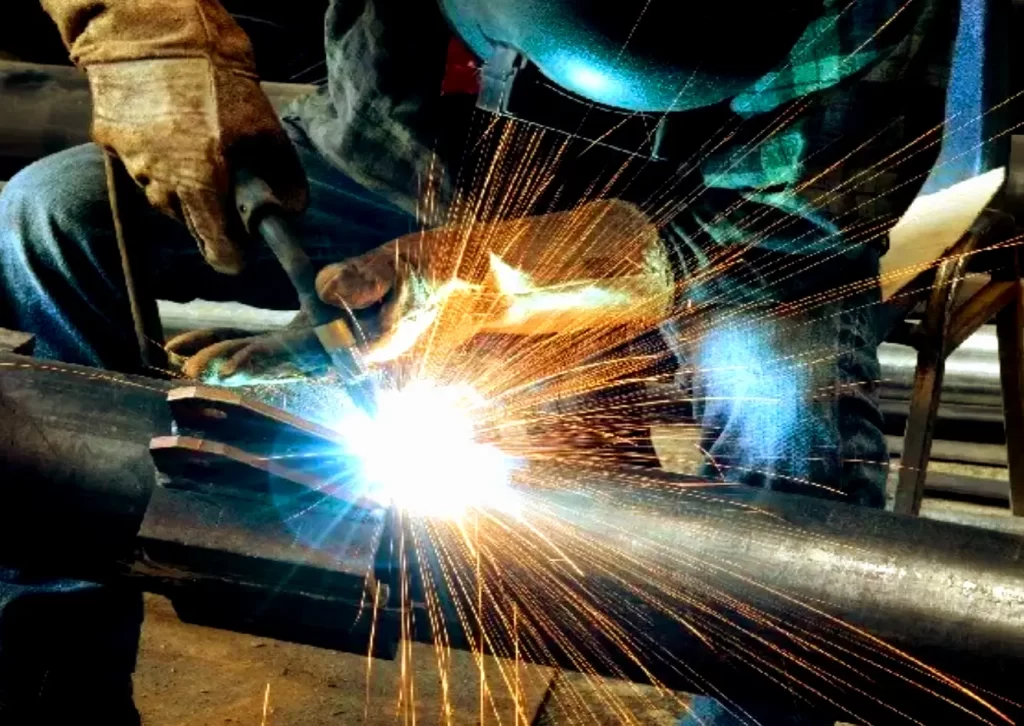
Then, the current reverts to a background level that is able to maintain the arc but not strong enough to create a metal transfer. The weld pool then is able to cool slightly before the current increases and deposits more filler metal again.
Using a traditional short-circuit process, the lime-based slag in T-5 wires produces excessive amounts of spatter and makes them very difficult to use in vertical applications. Using a pulse program substantially improves the weldability of the T-5 class of wires, resulting in faster travel speeds, increased deposition rates, less spatter, increased all-position puddle control, and the ability to work thinner sections of material without risking distortion.
In general, T-5 gas-shielded flux-cored wires are used in heavy equipment manufacturing, such as farm and construction equipment, and are preferred for their ability to provide very high deposition rates, high impact toughness, and low hydrogen content. The basic slag system used in T-5 wires produces a very high-quality weld deposit that is very resistant to cracking, making this class of wire ideal for welding metals that are exposed to severe weather and mechanical stress. These categories of wire are available in both carbon steel and low alloy varieties.
However, if pulsed welding is done with these wires it is important to use a smaller diameter wire — generally 1/16 in. or less. Also, because of the fast-cooling weld puddle, pulsed welding generally results in shallower penetration than non-pulsed welding, so care should be taken to ensure the weld meets the penetration requirements of the application.
The weld qualities and productivity improvements offered by gas-shielded flux-cored wires are often overlooked as a result of commonly held myths about their suitability for a variety of applications. A clearer understanding of the range and capabilities of this class of wires, however, reveals that they can offer the best combination of efficiency and welder appeal for many industrial applications.
Flux core Welding Myths
Myth #1: The Flux core Welding Process Produces a Lot of Hard Spatter
If you are a beginner welder and each time you try to flux core weld you have to deal with lots of hard spatter, there is a chance you are doing something wrong. You should first try to tune your flux core welder according to the manufacturer’s recommendations. If the problems with settings still persist, you are probably dealing with improper polarity.
DC positive will results in lots of spatter, high ropey bead, and lack of penetration. The spatter is hardly stacked and it is almost impossible to remove it even with post-weld cleaning.
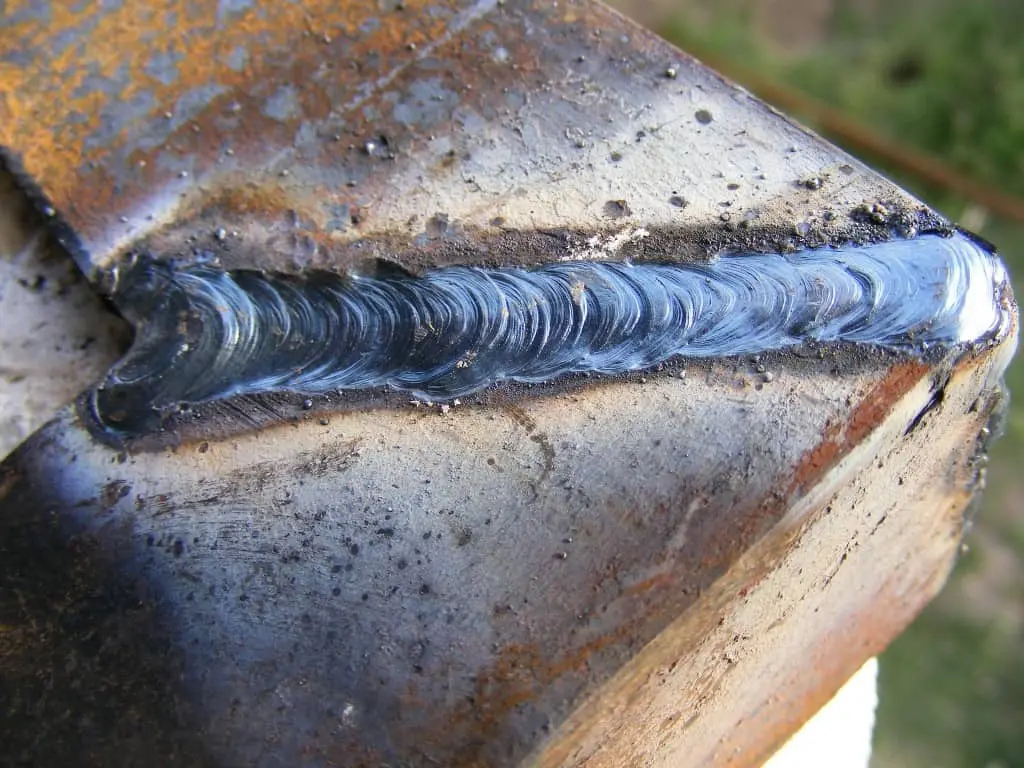
The reason is that DC+ polarity gives about 70% of the power source on the wire, while only 30% on the base metals.
Once you switch it the polarity of your welding gun and ground, you will get DC negative polarity with constant voltage, smooth bead appearance, and high weld quality results. If the problem is still present, you can use anti-spatter products.
Myth #2: Flux core Welding Lacks Penetration
Many welders believe you get less penetration with flux core welding compared to short-circuit MIG welding wires. However, the results if not the similar, are quite the opposite.
Flux core welding shows noticeably better penetration on the thicker plates compared to MIG welding, and that’s why it is often used in more challenging projects.
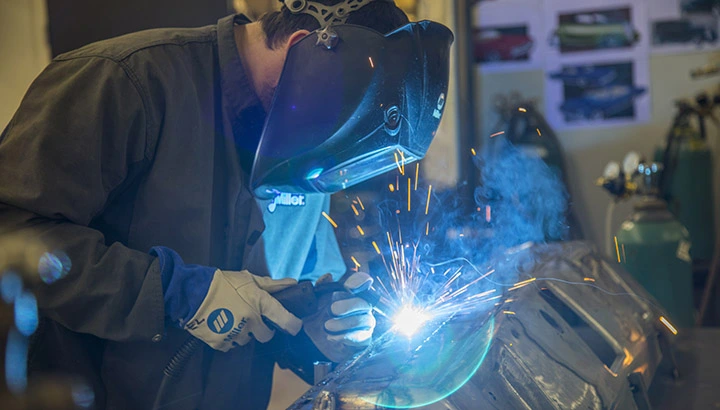
If you struggle with lack of penetration with flux core welding, you should rework your welding parameters, and make sure you get a filler wire to base metal fit-up and proper wire feed.
Myth #3: Flux core Welding Struggles With Porosity
Once again, if you are a beginner welder trying flux core welding for the first time, you might have to deal with excess porosity. While solid wires don’t usually struggle with porosity, flux core components can weaken if stored improperly. Moisture can impact the positive characteristics of flux core wire, so you should make sure you store them properly.
Another common source of porosity in flux core is improper contact tip to work distance.
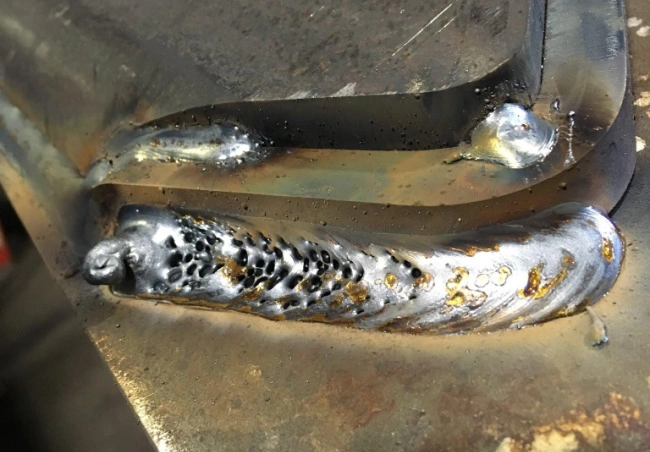
If you get too close to the workpiece with your welding gun and put the contact tip right next to the weld puddle, there are high chances of porosity. Therefore, maintaining proper CTWD is essential. That way, you preheat the flux before it enters the weld pool.





